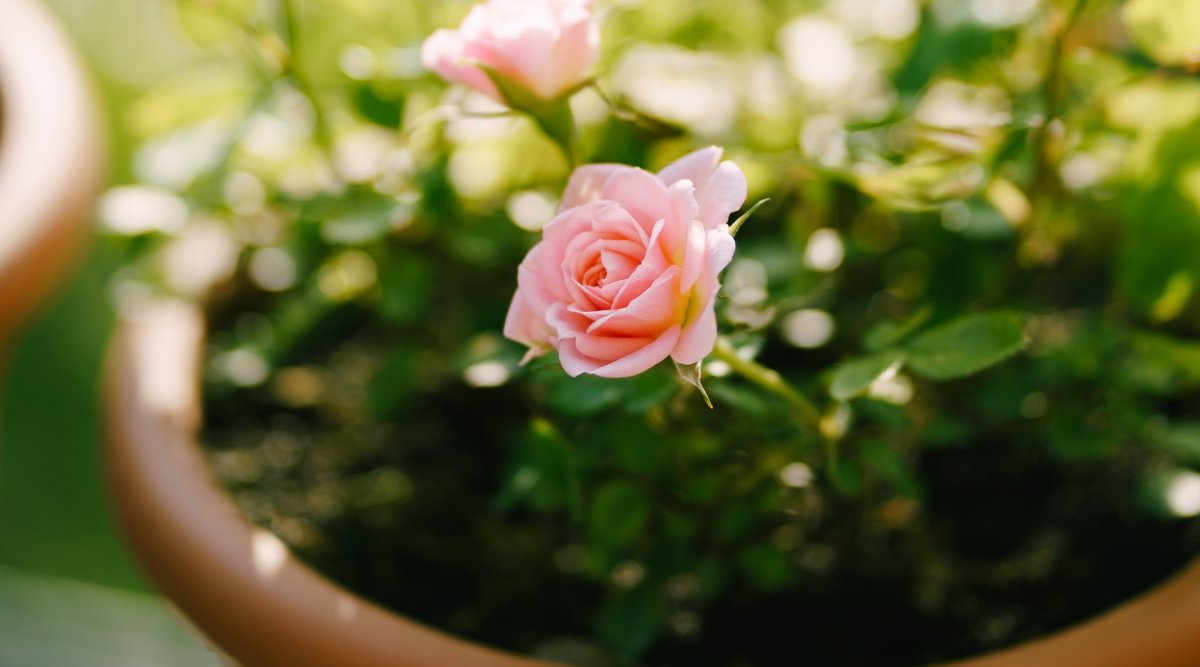With thousands of different rose varieties available, it’s easy to find at least one rose plant to fall in love with. Even if you think you’ve found your favorite rose, it’s always fun to experiment with adding new plants to your garden. Buying new rose plants is one option, but propagating roses is a bit more interesting.
Growing roses from cuttings is a popular option, but roses also produce seeds. However, before you plant a rose seed and hope for the best, take a minute to learn about the best methods for success. I’ll cover whether or not you can grow roses from seed as well as important factors to consider.
The Short Answer
While you can grow roses from seed, this typically isn’t the best way to propagate new rose plants. This method is slower than propagating roses from cuttings, and hybrid roses won’t breed true to seed. However, growing from seed allows you to cross-breed plants and produce new rose varieties.
The Long Answer
Growing from seed is possible, but it’s not always the preferred propagation method. I’ll introduce you to factors to consider when planting rose seeds, including whether or not a rose will breed true and how long it takes a plant to mature and produce flowers.
Factors to Consider Before Planting Rose Seeds
As I mentioned above, just because you can grow roses this way doesn’t mean you should! Consider the following points before planting rose seeds.
Will a Rose Breed True?
With over 300 species of roses and thousands of different varieties, it’s safe to say there’s a lot of variation within the Rosa genus. The different genetics lead to a rainbow of flower colors, varying heights, and unique bloom times. But they also impact how roses produce new plants.
Some rose plants breed true, which means the plants that grow from seeds resemble the parent plants. However, many roses won’t resemble the parent plant if you grow them from seed. The best way to determine if your rose will breed true is to determine whether it’s a hybrid rose or a species rose.
Hybrid roses emerged when plant breeders crossed two or more rose species. People refer to the resulting offspring as the F1 generation and the offspring of two F1 plants as the F2 generation. If you plant the seeds from a hybrid rose, the resulting offspring won’t be identical to the parent plant. Some popular hybrid roses include Knock Out roses, Drift roses, and ‘Carefree Beauty.’
Species roses, also known as wild roses, are unaltered single rose species. Seeds from wild roses grow into plants that closely resemble the parent plant as long as the flower receives pollen from a rose of the same species. The Virginia rose, swamp rose, and white prairie rose are all wild roses.
Time to Maturity
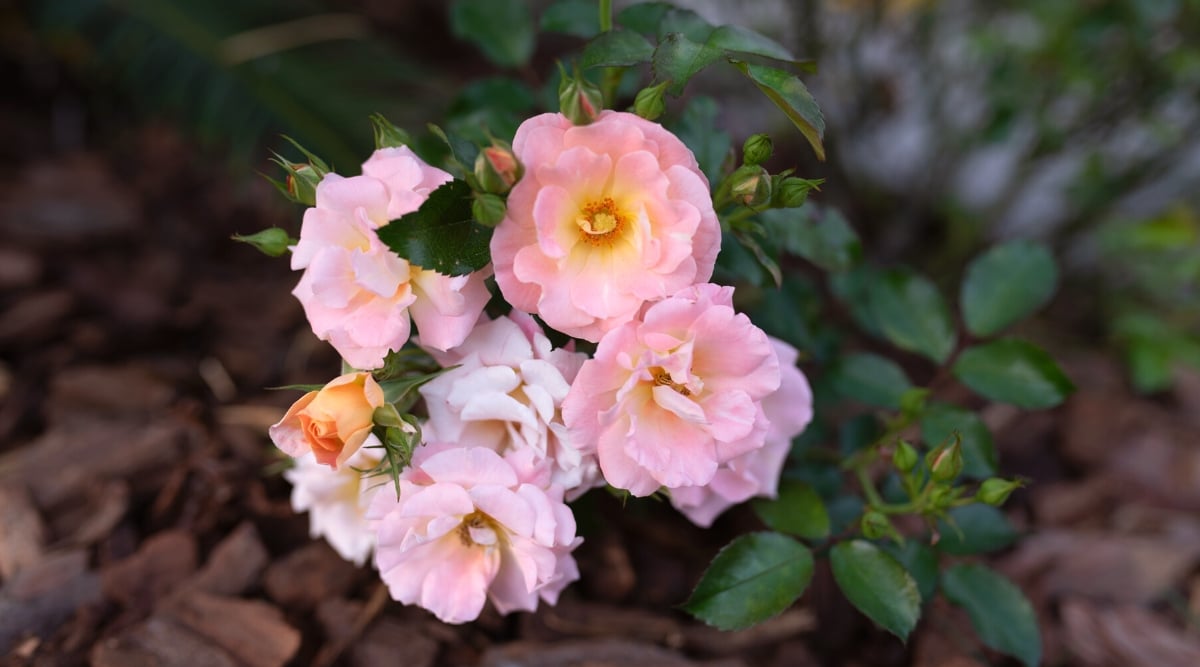
Even if your rose seed will grow into a mature plant with desirable characteristics, you may not like how long it takes to produce a mature plant. Once a rose seed germinates, it will take about six months for it to grow into a seedling that’s large enough to plant outdoors. This seedling will take another 6-12 months to produce its first flowers and a few more years to reach maturity.
If you’re not in a rush to produce a new plant, great! But this isn’t the best option if you want to propagate, plant, and watch a new plant flower in the same year.
Hybridizing Roses
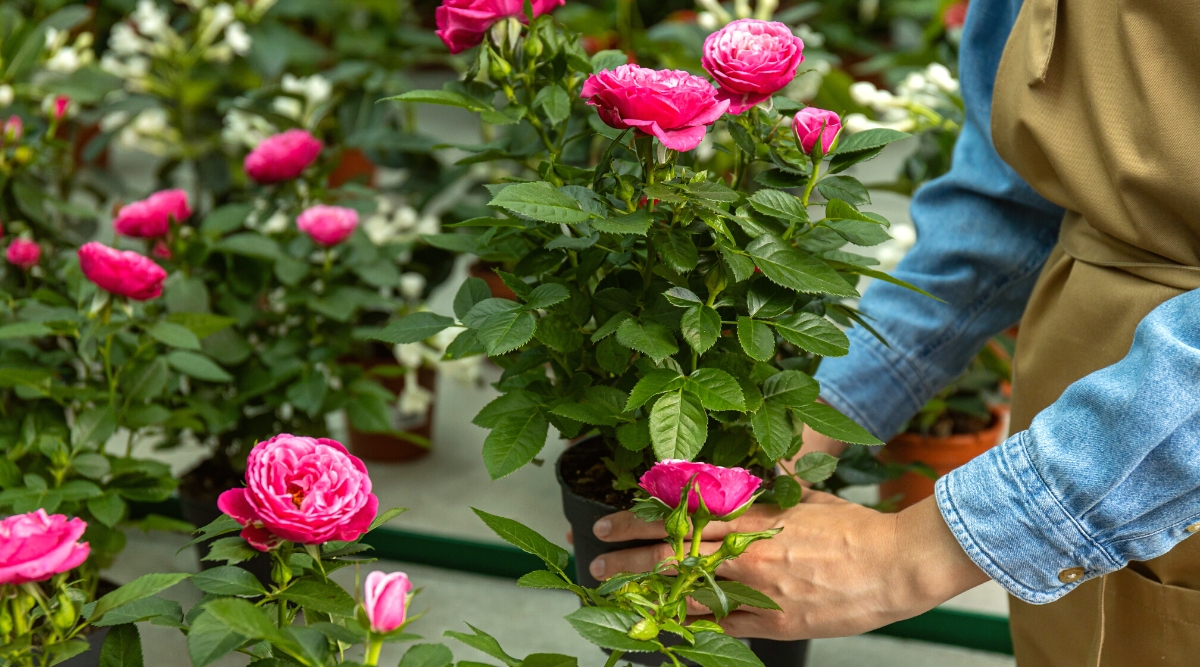
One of the main reasons people grow roses from seed is to produce new hybrids. Taking pollen from one type of rose and using it to hand pollinate the stigma of another type allows you to produce a new rose that’s a hybrid of the two varieties. But don’t think you can cross a thornless shrub rose and a disease-resistant shrub rose and simply end up with a thornless, disease-resistant shrub rose. Unfortunately, it’s not that simple.
Just as it’s hard to predict what features a child will inherit from each parent, it’s difficult to guess what the new hybrid rose will look like. That’s why rose breeders often make multiple crosses using the same parent plants. Each seed—and the resulting plant—will contain a unique set of genes and, therefore, unique characteristics. Breeders can keep the hybrids they like and propagate them via cuttings to produce plants with identical characteristics.
If you’d like to play around with breeding roses, you must know how to cross-pollinate plants and provide the seeds with the right conditions. But if you just want to produce rose plants that resemble species and cultivars you already love, you can get away with growing new roses from cuttings.
How to Grow Roses from Seed
If you want to try your hand at crossing roses or produce new wild rose seedlings to share with friends, this is a good option. I’ll share how to complete the process all the way from pollination to transplanting.
Select Parent Plants
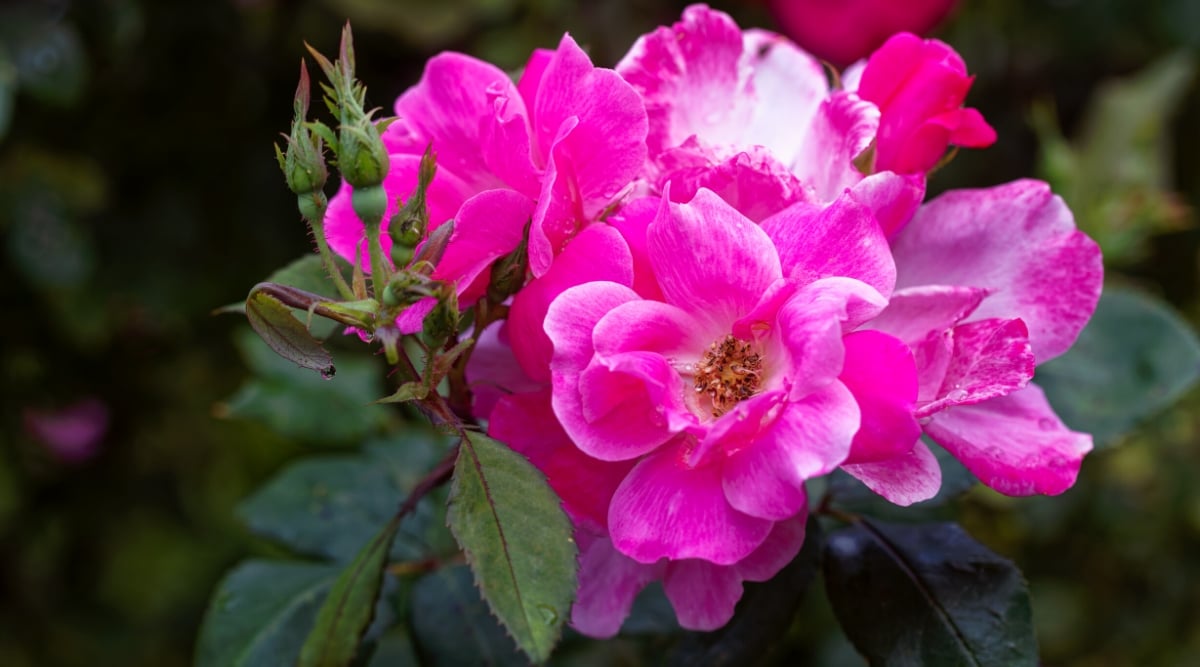
The first step is selecting the two parent plants. If you want to create a hybrid, choose two different rose species or cultivars.
Although it’s hard to say which characteristics each parent will pass on, start with two plants that are a mix of your desired plant. You can also just play around with crossing roses you like and see what you end up with.
Prepare the Mother Plant
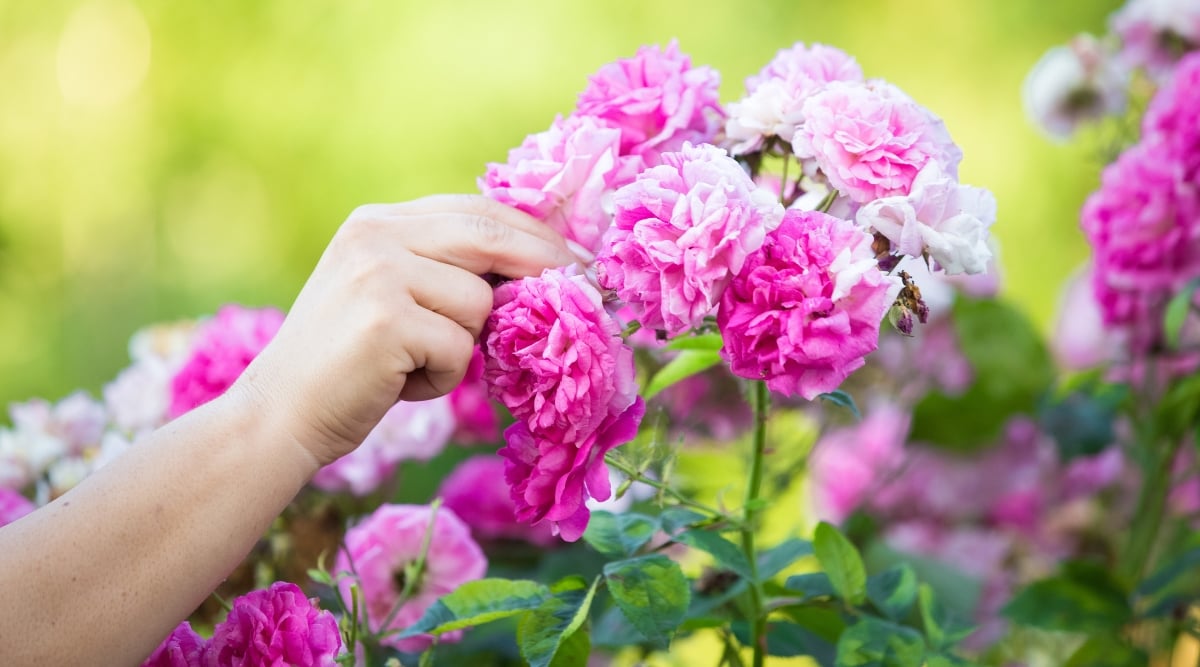
Wait until the plants begin to flower, and select a healthy flower on the mother plant. Gently remove the flower’s petals and pollen-covered stamens while leaving the central stigma and style intact. This will prevent the flower from self-pollinating.
Pollinate the Flowers
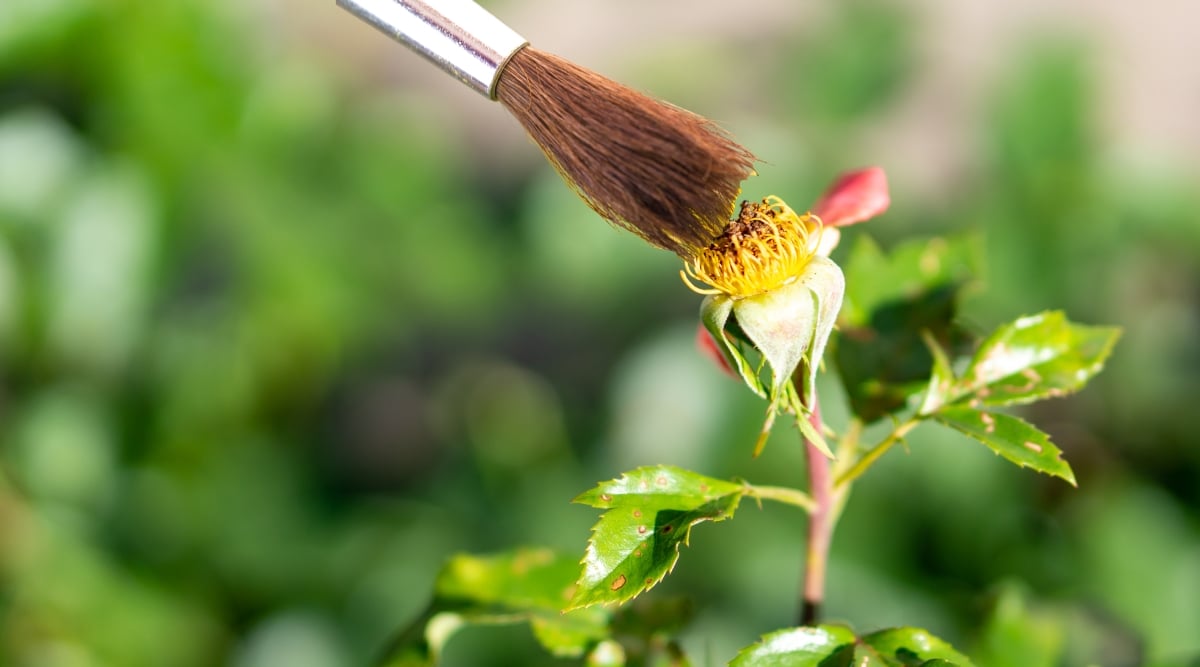
When the stigma on the mother flower is sticky, it’s ready to accept pollen. Locate a pollen-rich flower on the father plant and gently cut it off. The best time to collect and distribute pollen is on a temperate day when the heat does not exceed 85°F (29°C).
Carry the flower to the mother plant and lightly shake it so the pollen falls onto the stigma. You can also use a paintbrush to collect pollen and cross-pollinate flowers, but I find this usually isn’t necessary.
Label Each Cross
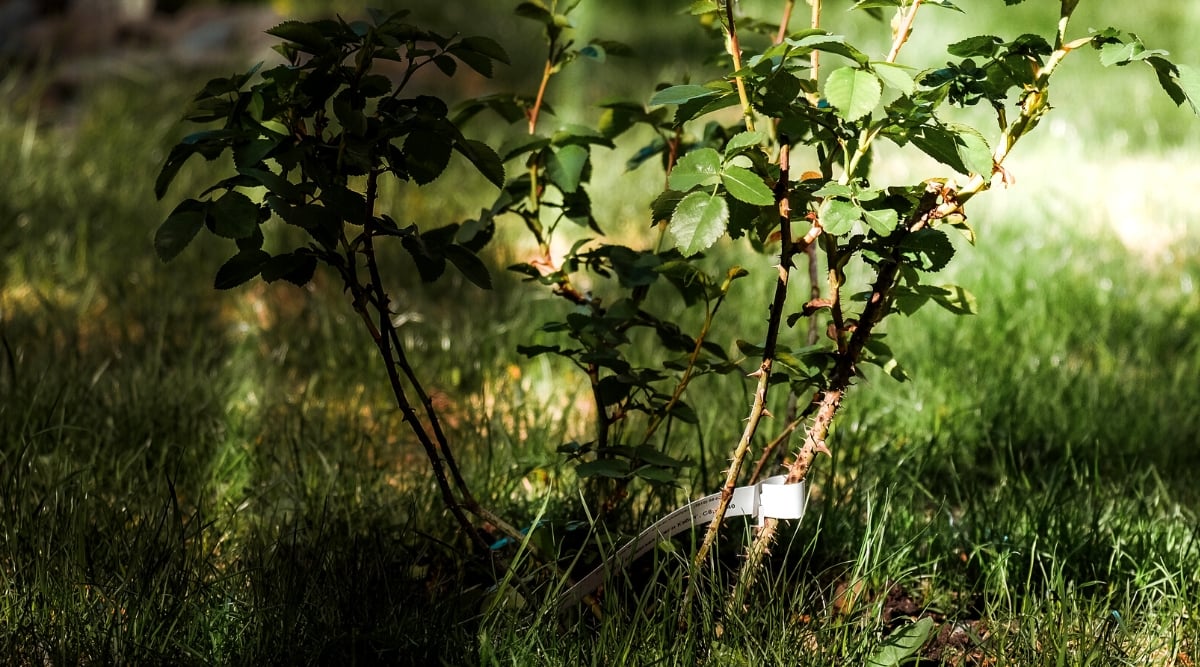
Even if you’re only cross-pollinating two different plants, it helps to label each cross as soon as you complete it. I’m embarrassed to reveal the number of times I’ve left a plant unlabeled, incorrectly thinking I’d keep the information in my head. I’d return a few days or weeks later and curse myself for not labeling the plant.
Wait for Rose Hips to Grow
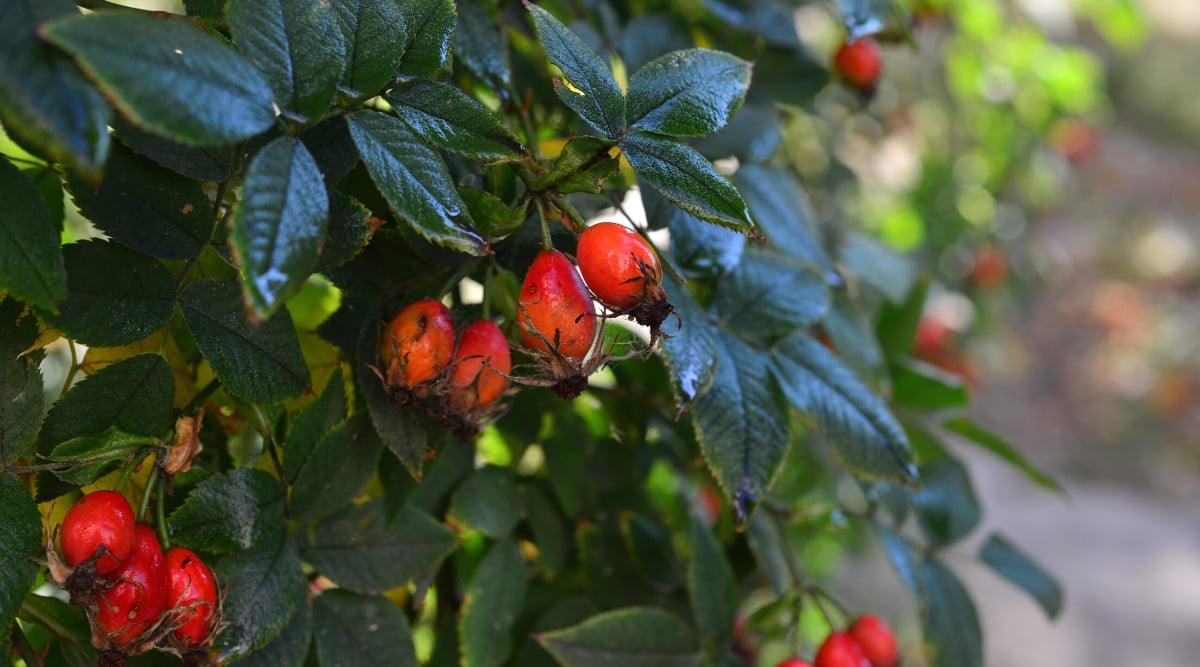
As long as the rose is pollinated, the flower will begin producing a rose hip. These hips form soon after germination and mature a few months later. They are small bulbous masses that form below the area where the flowers once were.
Collect Mature Rose Hips
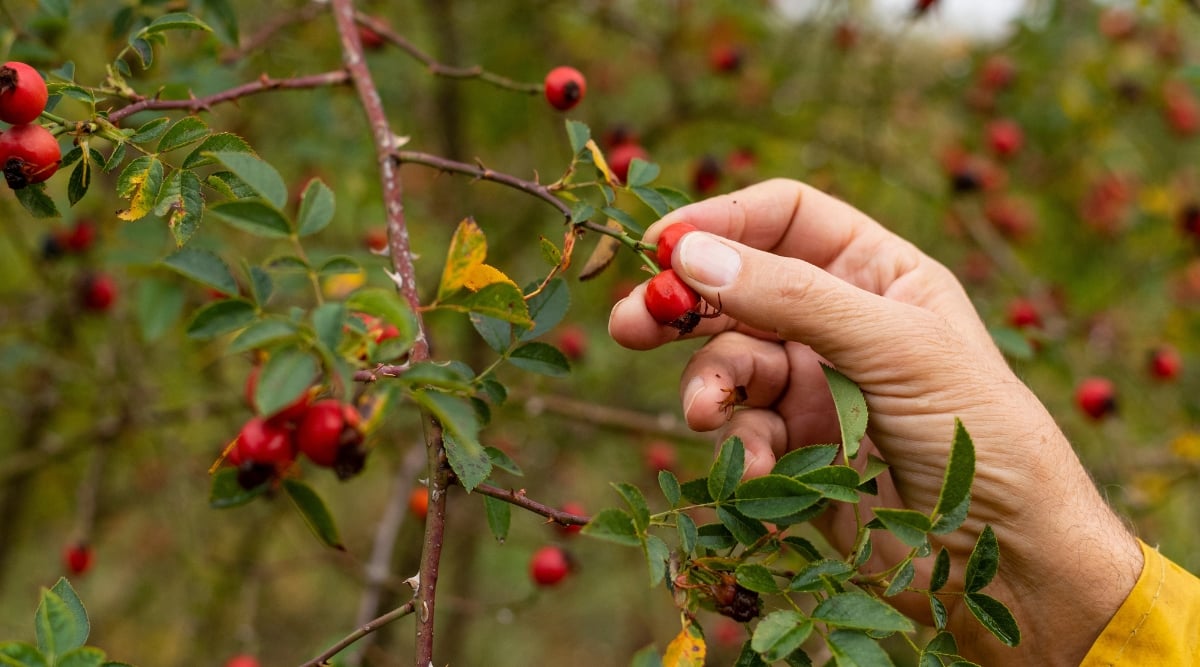
Rose hips start out green, then turn red, orange, yellow, or some combination of these warm colors. Collect the hips when they’ve changed color and are nice and plump. Mature hips can sit on the plants for a few weeks after they mature but avoid collecting dried and shriveled fruits.
Remove and Clean Seeds
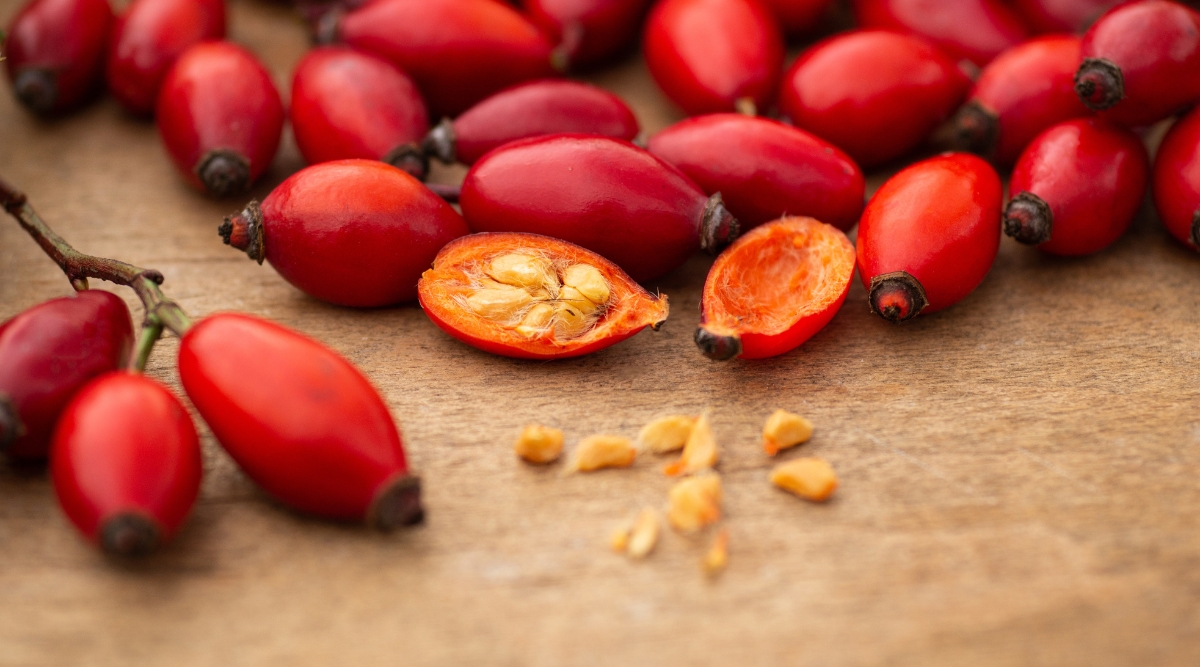
Use a sharp knife to gently cut into the exterior of the rose hip, then scrape out the seeds. Rinse the seeds under water to remove any of the sticky pulp, and set them on a paper towel to dry.
At this point, you can dry the seeds and store them in a cool, dry area for future use or begin the stratification process.
Stratify the Seeds
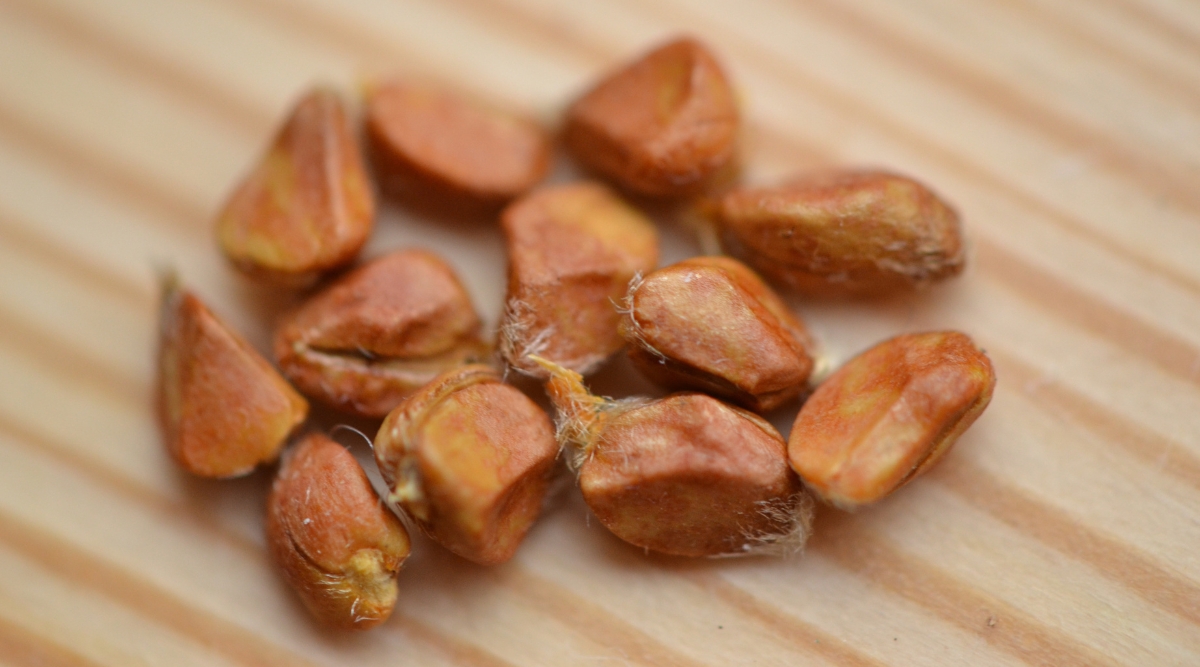
Stratification is the process of exposing seeds to a specific environment so they can begin germinating. You must expose roses to cold, damp conditions for multiple weeks to break the factors inhibiting germination.
Outdoor winter temperatures naturally provide the necessary conditions, but you can mimic these conditions with your refrigerator. Place the seeds on a wet paper towel, place the towel in a plastic bag, then set the seeds in the fridge for six to ten weeks.
Plant the Seeds
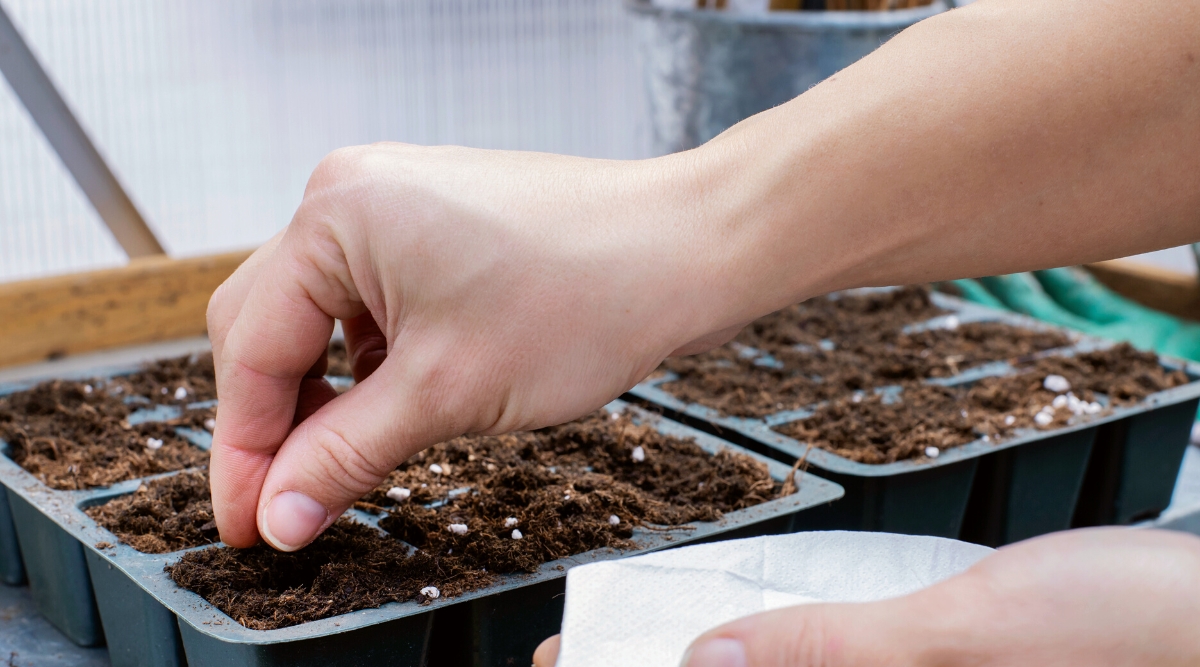
The best time to plant rose seeds is the late winter. Place the seeds in seedling trays filled with well-draining potting mix and cover them with a quarter of an inch of soil. Keep the soil moist and place the seeds somewhere between 60-70°F (15-21°C).
You should see the seeds emerge within one to two weeks. Once the seedlings emerge, set them in an area that receives at least ten hours of bright light each day. A greenhouse or brightly lit window works well, but I like to use grow lights in the winter.
Pot Up Seedlings
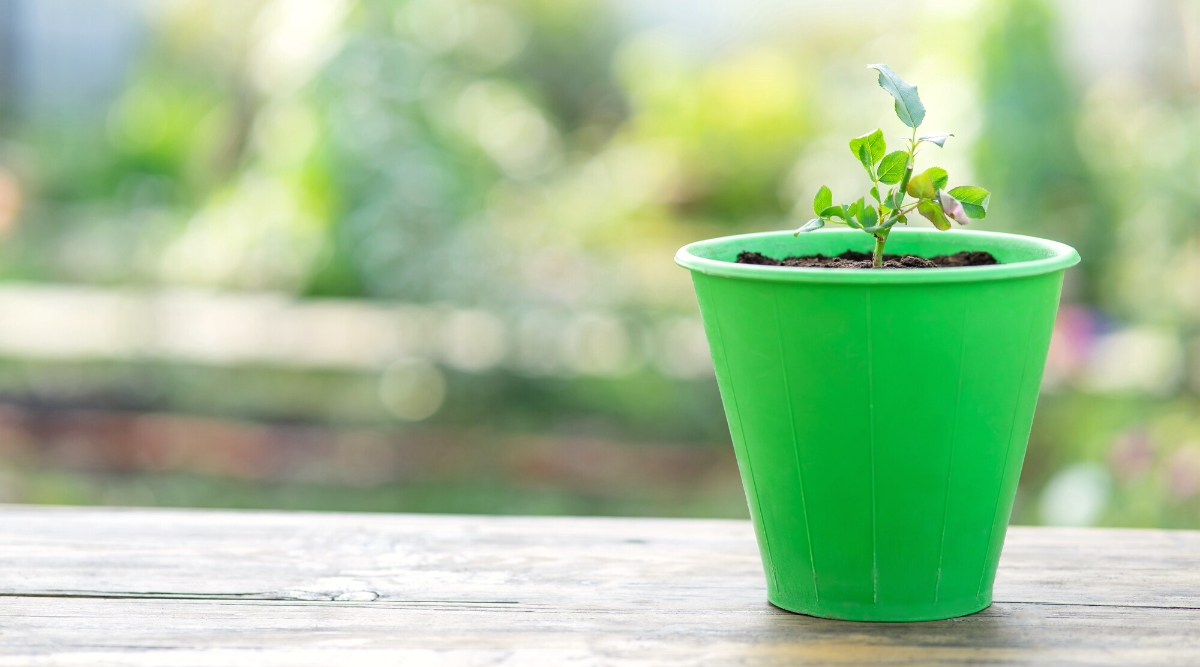
When your rose seedlings are a few inches tall or start to outgrow the original seedling containers, transfer them to larger pots. Once the weather remains above freezing, move the pots outdoors to begin acclimating the plants to their new environment.
Alternatives
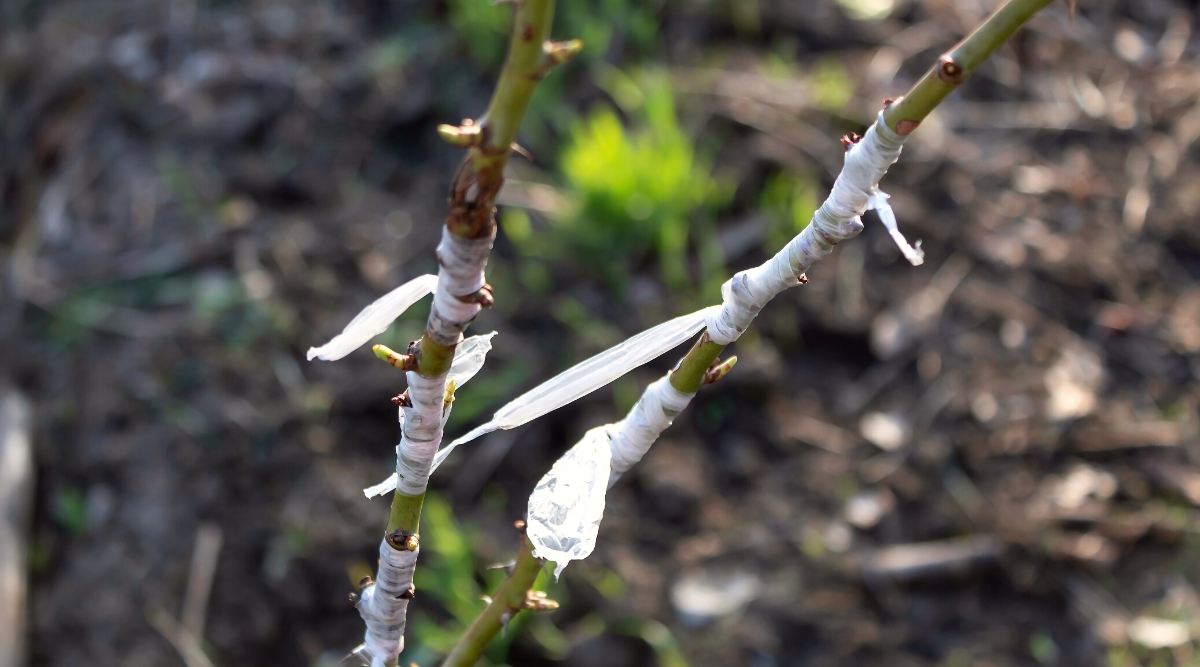
If you’d like to propagate a rose plant, planting from seed isn’t your only option. While cross-pollinating roses allows you to develop new varieties, propagating roses by cuttings is the best way to produce roses that resemble the parent plant. Depending on your goals, you can either root cuttings or graft them onto a specialized rootstock.
Another option is air layering. This method works well for roses that are difficult to root. Put simply, air layering involves cutting and wrapping a portion of the stem in peat moss and black plastic. The result is a rooted stem you can cut off and plant elsewhere.
Final Thoughts
If you’d like to play around with creating new rose varieties, growing from seed is the way to go. With a dose of creativity and a bit of patience, you can create beautiful new roses to enjoy at home or share with friends. However, propagating roses from cuttings is a better option if you’d like to produce roses that resemble the parent plant.
